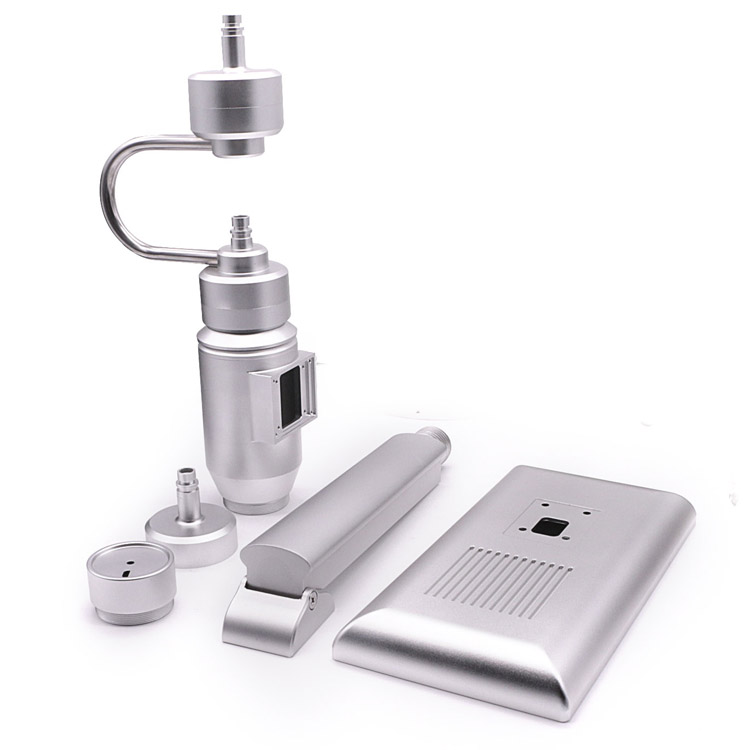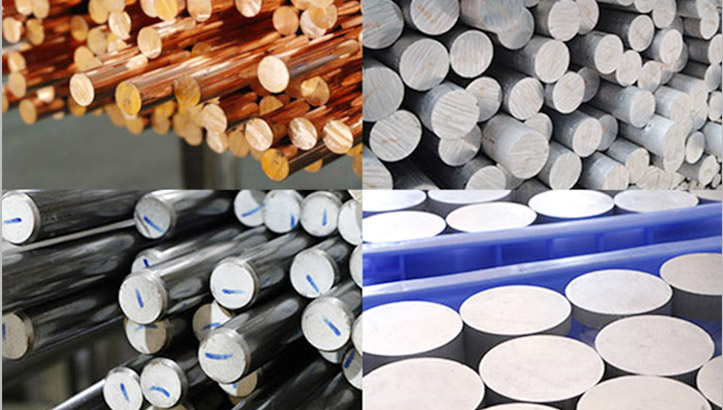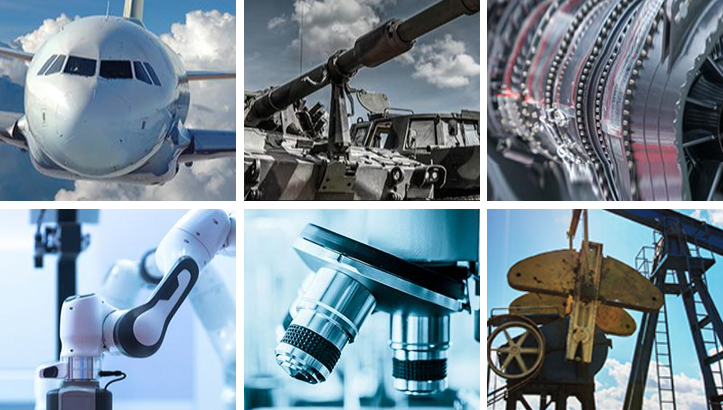12 Types of Milling Operations: Definition, Types, and Applications
Milling technology involves the use of a rotating cutting tool to remove material from a workpiece. Milling machines can perform a variety of operations to produce components with complex shapes and features. In this article, we will explore 12 different types of milling operations, covering their definitions, various types, and applications across industries.
What Type of Machining is Milling?
Milling is a subtractive manufacturing technique where a rotating, multi-edged milling cutter removes material from a workpiece to achieve precise shapes and features. This process, essential for producing mechanical components, is widely employed across various industries for tasks such as creating prototypes and manufacturing parts.

How does CNC Milling Work?
CNC milling is a highly efficient machining process that uses computer control and rotating multi-point cutting tools to gradually remove material from the workpiece and produce custom-designed parts or products.
History and Evolution of Milling
Milling originated in the early 19th century, when the milling machine capable of producing complex parts was invented. After decades of development, the milling machine has gradually evolved into a highly complex CNC machine, which not only greatly improves machining accuracy and efficiency, but also continues to promote progress and innovation in the manufacturing industry.
Types of Milling Machines.
Before diving into specific milling operations, it’s essential to understand the different types of milling machines that are available. The type of machine often dictates the range of operations that can be performed.
Vertical Milling Machines:
In a vertical milling machine, the spindle is oriented vertically, which allows for a wide variety of operations, including face and end milling. These machines are widely used due to their flexibility and precision in cutting various materials.
Horizontal Milling Machines:
Horizontal milling machines have a horizontal spindle and are particularly useful for heavy-duty tasks like plain milling and gang milling. These machines can remove large volumes of material quickly and are ideal for mass production.
Universal Milling Machines:
Universal milling machines offer both vertical and horizontal milling capabilities, making them extremely versatile. They are commonly used in tool rooms and workshops where a range of milling operations is required.
12 CNC Milling Technologies
In the field of CNC machining, milling technology has become the preferred method for manufacturing complex parts due to its high precision and flexibility. According to different workpiece geometries and processing requirements, CNC milling technology can be divided into the following 12 types:
-
Face Milling
Face milling is mainly used for finishing of flat or large-area surfaces. The rotating milling cutter cuts on the workpiece surface to achieve a flat and smooth surface quality. The teeth of the face milling cutter are located on the outside and are responsible for performing the main cutting tasks, while the cutting edge on the tool surface is responsible for cleaning the trace material left after the workpiece or tool bounces during the cutting process, thereby improving the surface finish.
-
General Milling
of general milling is to remove excess material from the workpiece to create the desired contour and shape. This technology is widely applicable to the processing needs of a variety of materials and complex shapes. Plane milling, as another common milling machine operation, can generate a simple, flat and horizontal surface parallel to the rotation axis of the plane milling cutter. It is often called slab milling or surface milling. This process is usually completed on a horizontal milling machine, where the plane milling cutter is properly mounted on the spindle.
-
Side Milling
The side milling technology can achieve fine control of the side shape and size by precisely adjusting the angle and position of the milling cutter. When a vertical plane needs to be produced on the workpiece, side milling is undoubtedly an ideal choice. During the side milling operation, the milling cutter is firmly mounted on the spindle of the horizontal milling machine, and the workpiece fixture is lifted to the preset cutting depth and then fed under the rotating milling cutter for material removal. It is worth noting that the spiral groove design on the side milling cutter helps to effectively discharge chips during the processing process.
Although the size, type and diameter of side milling cutters will vary depending on specific processing needs, there is one principle that should be kept in mind: use the smallest diameter milling cutter possible that can work properly, and ensure that there is sufficient clearance between the tool arbor support and the workpiece or vise to minimize bending deformation of the milling cutter.
-
Cross Milling
When you need to machine two or more parallel vertical surfaces in one cut, straddle milling technology is a good choice. This technology is achieved by installing two side milling cutters on the same spindle of the horizontal milling machine. The two milling cutters are kept at a certain distance by spacer rings of the same size as the parallel sides of the workpiece, so that they can “straddle” the workpiece and generate flat and vertical surfaces.
The cross-milling operation is not limited to plane machining. It can also cut shapes such as splines, squares or hexagons at the end of circular parts. As a special milling technology, cross-milling is particularly suitable for machining areas with large spans on workpieces. By carefully adjusting the milling parameters and the tool movement path, it can be ensured that the accuracy and surface quality of the entire processing area meet the requirements.
-
Group Milling
Group milling is an efficient machining method that uses multiple milling cutters to work simultaneously, significantly improving machining efficiency and shortening machining cycles. This method is particularly suitable for large workpieces or scenarios where multiple surfaces need to be processed simultaneously. As a form of combined milling, it involves fixing two or more milling cutters together on a spindle to process multiple surfaces at one time. In actual operation, these milling cutters usually have different diameters, shapes or widths and are mounted on spindles equipped with spacer rings to ensure proper spacing between the cutters. The specific combination of cutters depends entirely on the specific requirements of the parts to be machined, and there are almost no restrictions in this regard.
-
Angle Milling
Angle milling technology is mainly used to process the corners or edges of workpieces. By flexibly adjusting the angle and position of the milling cutter, the required acute or obtuse angle can be accurately shaped. On a horizontal milling machine, the angle milling cutter is specially ground to form a double angle, which makes it very suitable for producing parts with specific shapes such as V-blocks.
-
Profile Milling
Form milling uses specially designed milling cutters to create complex contours and shapes in just one cut, making it particularly suitable for workpieces that require high precision and complex shapes. This process relies on specialized forming tools that are carefully ground to produce irregular surfaces or contours, whether convex, concave or other custom shapes. Form milling is not limited to straight contours, but can also complete complex contours composed of a combination of curves and straight lines in a single cut.
Profile milling cutters are ground according to the shape of the workpiece contour and are suitable for vertical and horizontal milling machines. Profile grinding is sometimes performed on single-point fly cutters. For irregular shapes that are machined, whether convex, concave or any other shape, they are usually checked with a template gauge to ensure the accuracy of the formed surface and meet the design requirements.
-
End Milling
End milling technology focuses on the processing of the end face of the workpiece. It uses a rotating milling cutter to accurately cut at one end of the workpiece to ensure that the end face reaches a high quality standard of flatness and verticality . In addition, end milling technology can also realize peripheral and face milling operations at the same time. Whether it is creating vertical, horizontal or angled surfaces, or performing slotting, notching and keyway milling, end milling can be done with ease.
-
Sawmilling
Although sawing is often closely associated with the woodworking industry, a similar cutting operation with a rotating blade also exists in certain metalworking applications. This operation uses larger, slim-profile tools that are designed to precisely produce narrow grooves or to divide a workpiece in two.
During this type of machining, a thin, sharp tool cuts a narrow slit in the workpiece or cuts it in two. Since the rapid and violent cutting may cause the blade-like tool to break, the feed rate and cutting speed are slowed down accordingly. The workpiece can be firmly clamped in a vise or fixed directly on the workbench, and the tool is precisely positioned above a T-slot on the workbench to ensure accuracy and stability of the machining.
-
Gear Milling
Gear milling is a milling technique specifically designed to produce gear teeth with precision. It relies on precise tool paths and cutting parameters to ensure that the gears achieve the precision and performance they were designed for. Gear milling can be done using a profile milling cutter mounted on a horizontal spindle, or an end mill ground to the appropriate shape and fixed to a vertical spindle. The shape of these milling cutters precisely matches the backlash of the gears, which is key to achieving high-quality gear machining.
-
Thread Milling
Thread milling is a machining method that uses a rotating milling cutter to accurately form threads on a workpiece. Compared with traditional thread cutting, it provides higher machining accuracy and longer tool life. This machining process is specifically used to create threads in pre-existing holes in the workpiece. The tool used is called a thread milling cutter and is suitable for vertical and horizontal milling machines. Unlike the tapping process, thread milling is particularly good at generating threads when the hole diameter is larger than the milling cutter diameter.
When thread milling is performed, three different movements are required simultaneously: first, the rotation of the thread milling cutter, second, its axial movement in and out of the hole, and finally, the movement of the workpiece to ensure that the desired thread shape can be cut. Although thread turning may have a wider range of applications, thread milling has become the preferred method in machine shops in certain specific scenarios, such as when the thread is close to a shoulder, near the bottom of a blind hole, or when the machinist does not want to damage the tap on an expensive part by tapping.
-
CAM Milling
CAM milling is a milling process that combines computer-aided manufacturing technology. Through CAM software, tool paths and cutting parameters can be automatically generated to simplify the machining process and improve machining efficiency.
In CAM milling operations, diving head tools are often used to produce these critical mechanical parts. The diving head tool can assist in the rotational positioning of the workpiece, ensuring that the milling cutter can effectively remove excess material from the workpiece surface according to the precise contour designed by the CAM software, thereby processing a product that meets the design requirements.
12 CNC Milling Technologies Brief Description
| Milling operations | describe | advantage | application |
| Face milling | 2.5-axis machining, XY-axis linkage, Z-axis layered motion | Stable cutting, good processing quality and high surface finish | Rough and fine machining of parts with straight walls and horizontal bottom surfaces, such as reference surfaces, inner cavity bottom surfaces, outer contours, etc. |
| General milling | The axis of rotation of the cutting tool is parallel to the workpiece surface, removing part of the material to form the desired product | Creates flat surfaces parallel to the tool axis | Machinery manufacturing, metal processing and other fields |
| Side milling | The milling direction is perpendicular to the feed direction of the milling machine, and the milling is performed on the side of the workpiece | Small cutting force and flexible workpiece shape | Aviation, aerospace, mechanical processing, automobile manufacturing and other fields |
| Cross milling | The milling cutter rotates at high speed around its own axis, and the workpiece moves relative to the milling cutter. Cross-milling is a special form of milling. | Flexible processing and strong adaptability | Suitable for machining workpieces of specific shapes and sizes |
| Group Milling | Machining with multiple cutters simultaneously | Improve efficiency and reduce time | Large workpieces, multi-surface machining |
| Angle milling | Adjust the milling cutter angle to machine corners or edges | Create the desired angle | V-blocks and other parts |
| Profile milling | One-step cutting using a specific shape milling cutter | High precision, complex shapes | Convex, concave and other customized shapes |
| End milling | Rotating milling cutter cutting workpiece end face | Flat, vertical end surface | End face machining, grooving |
| Sawmilling | Rotating blade cutting metal | Precision machining of narrow grooves | Metal Cutting |
| Gear Milling | Special milling cutter for machining gear tooth profile | High precision, long tool life | Gear machining |
| Thread Milling | Rotating milling cutter to form threads | High precision, large hole thread | Thread processing |
| CAM Milling | Milling with CAM technology | Automatically generate tool paths to improve efficiency | Complex shape processing |
How to Choose the Right Milling Operation
Selecting the right milling operation involves many considerations, including material type, desired finish, geometric complexity, machine parameters and setup, and appropriate tool selection .
Material Type
When choosing a milling operation, you need to consider the material type of the workpiece. Because different materials, such as plastics, soft metals, hard metals, ceramics, and composites, have different physical and chemical properties, these properties will directly affect the tool selection, cutting parameters, and processing strategies during the milling process. For example, hard metals may require sharper tools and higher cutting speeds due to their high strength and hardness, while plastics may require special tools to avoid thermal deformation and surface scratches.

Expected Completion
If a large amount of material needs to be removed, you may need to choose an end mill with a large diameter and multiple blades to increase material removal rate and processing efficiency. For precision parts that require high precision and smooth surfaces, you may need to choose a small diameter multi-blade end mill and use more sophisticated tool materials and cutting parameters.
Geometric Complexity
The geometric complexity of the workpiece is also an important consideration in selecting milling operations. For simple geometries, such as flat surfaces or straight grooves, ordinary milling cutters or end mills can be selected for processing. However, for complex geometries, such as curved grooves or deep groove structures, more flexible tools such as ball end mills, round nose mills or long-edge cylindrical mills may be required to adapt to complex cutting requirements.
Consider Machine Parameters and Settings
When choosing a milling operation, you also need to consider the machine tool parameters and settings. This includes spindle speed, feed rate, cutting depth and cutting speed. The selection of these parameters will directly affect the processing efficiency, tool life and processing quality.
Choose the Right Tool for Different Milling Operations
Different tool materials and types have different cutting performances and application ranges. When selecting a tool, factors such as workpiece material, cutting parameters, processing effect and geometric complexity need to be considered. For example, for hard metal processing, you may need to choose carbide or ceramic tools; for processing complex geometric shapes, you may need to choose tools with special shapes, such as ball end mills or round nose mills. In addition, the quality of the tool also directly affects the processing quality and tool life, so it is necessary to ensure that the tool has high cutting-edge quality and good durability.
Milling Operation Applications
Milling operations are a critical manufacturing process with a wide range of applications covering several important industries:
Automobile manufacturing: Provide high-precision and high-quality processing for key components such as engines, transmissions, wheels and suspension systems.
Aerospace: Used to manufacture aircraft engine parts, flight control panels and aircraft structural components to ensure the safety and excellent performance of aircraft.
Medical equipment manufacturing: Provide high-precision and reliable processing for key components such as housings and bases of medical equipment.
Mold manufacturing: capable of manufacturing molds with high-precision shapes and surface machining, such as plastic product molds, die-casting molds, etc.
Woodworking industry: used for precise cutting and shaping of wooden materials for furniture, cabinets and construction to meet the diverse needs of woodworking products.
Plastic Machining: Used to produce precision parts in plastic products, such as molds and prototypes, ensuring the quality and accuracy of plastic products.
Electronics Manufacturing: Used in the manufacture of printed circuit boards (PCBs) to create complex circuit patterns.

Start Your Metal Milling Project
Are you looking for a metal milling manufacturer? VMT is undoubtedly your ideal partner. VMT has 14 years of experience in metal milling and can process a variety of materials including steel, stainless steel, cast iron, non-ferrous metals , high-temperature alloys and titanium. At the same time, it can continuously innovate processing methods and processes according to customer needs and processing requirements to improve processing efficiency and product quality.
Frequently Asked Questions About Milling Operations
What are Three Basic Forms of Milling Process?
Three basic milling processes are:
Plain Milling: Creates flat surfaces or removes material.
Angular Milling: Forms chamfers, bevels, or angles.
Form Milling: Shapes complex contours or profiles.
What is the Difference Between CNC Milling and Milling?
There are significant differences between CNC milling and traditional milling. Traditional milling relies on manual control by the operator, and the tool movement is adjusted through handles and knobs. It requires high operator skills, limited processing accuracy and efficiency, and is easily affected by human factors. It is suitable for simple parts processing with low precision requirements. CNC milling uses computer numerical control technology to control the movement of machine tools through pre-programming, which greatly improves processing accuracy and efficiency, reduces human errors, can process complex-shaped workpieces, achieve micron-level accuracy, meet the needs of high-precision parts, and can be processed continuously and multi-axis linkage. It is widely used in the processing of parts with complex shapes and high precision requirements.
Plain Milling Operation
Plain milling is a basic milling operation, mainly used to remove material from the surface of a workpiece to form a plane or other simple shape processing. In the plain milling operation, the tool usually moves on the surface of the workpiece at a certain speed and feed rate to remove material. This operation is usually used to prepare the surface of the workpiece or remove excess allowance to provide a flat reference surface for subsequent machining.



